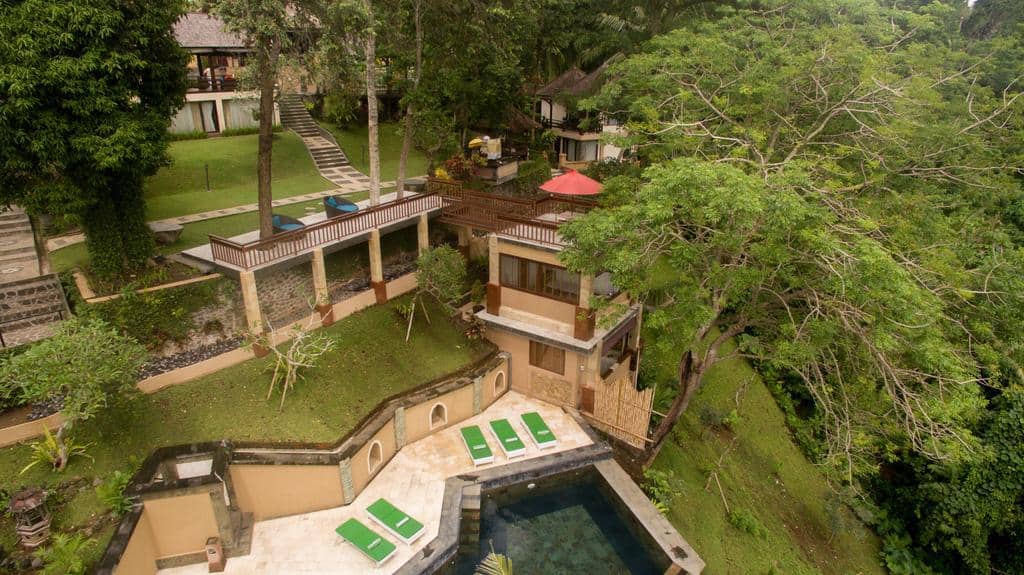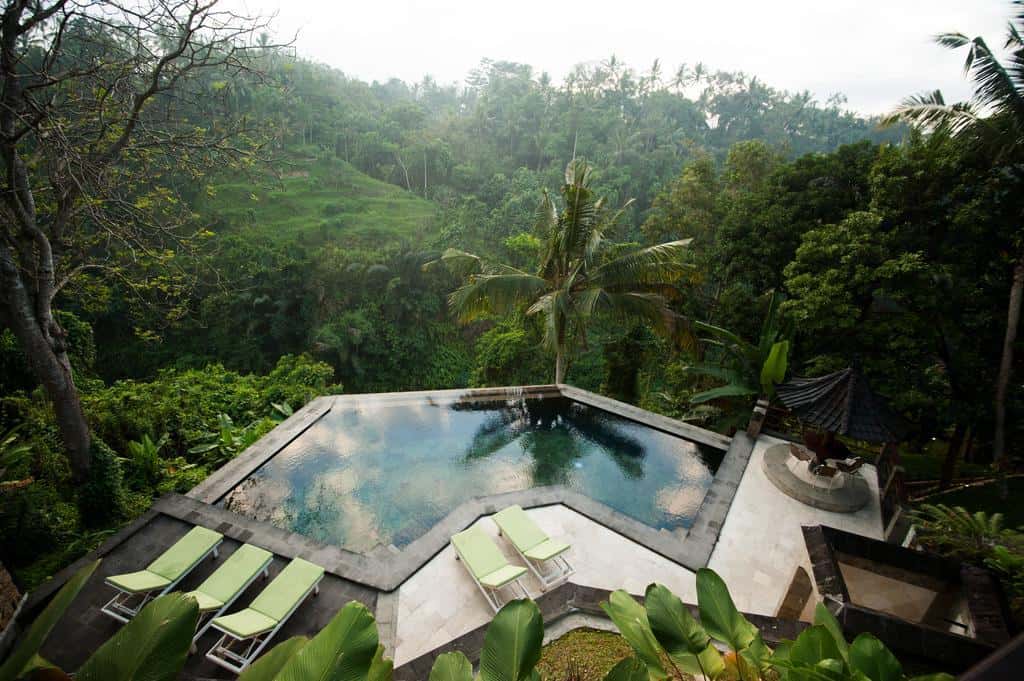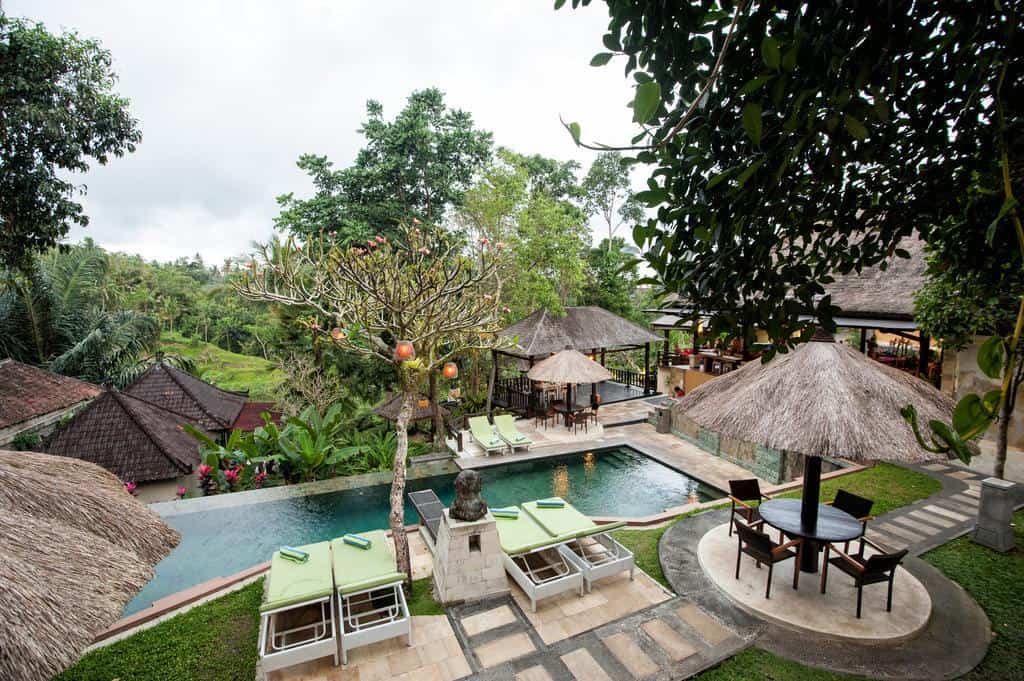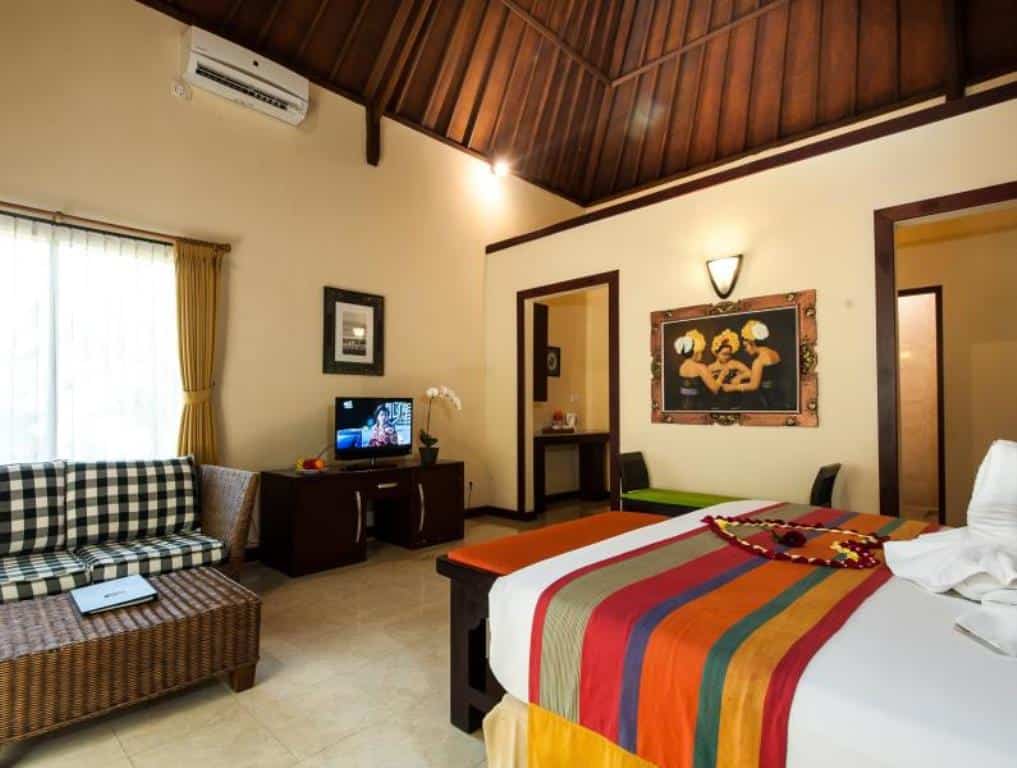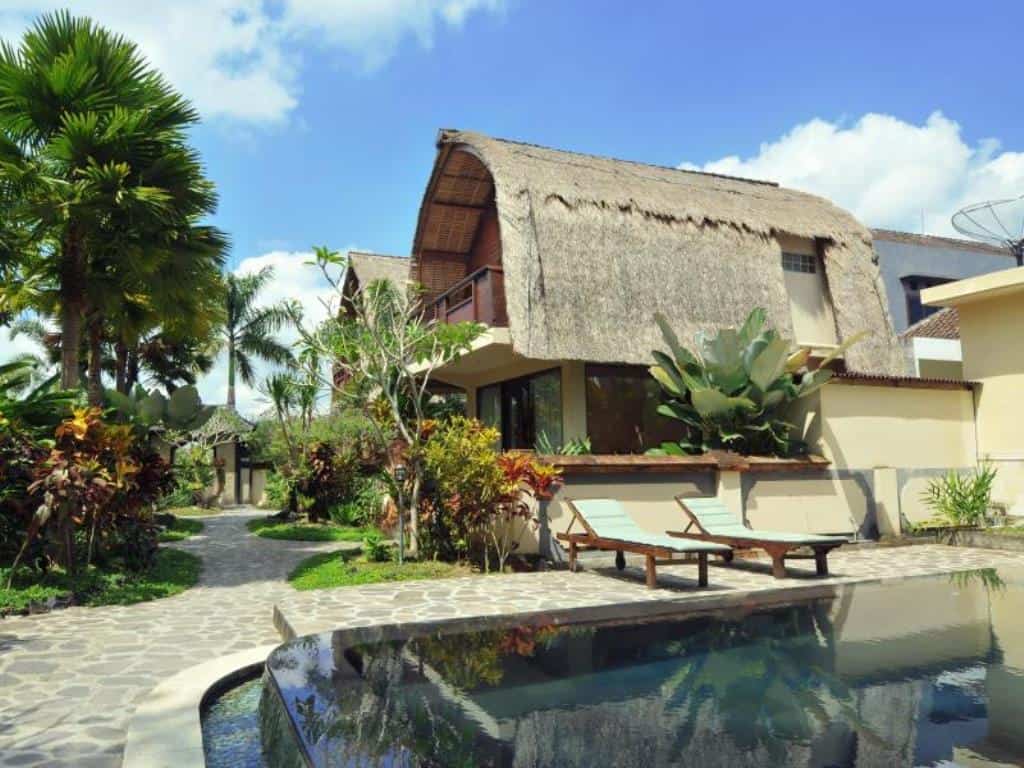Availability
We are sorry, there are no rooms available at this accommodation at the moment
General
Beji Ubud Resort
4 star Ubud Resort
The Beji Ubud Resort is an enchanting and charming boutique hotel, set in the heart of picturesque Ubud at the junction of the Oos & Cerik River in Bali’s spiritual and cultural heartland. Beji Ubud Resort is approximately 45 km to Ngurah Rai International Airport.
The hotel is located in close vicinity of Ubud’s famous museum NEKA Museum, beautifully blended with the contours of the hills lining the river valley providing unspoiled views of the opposite Rice terraces and woodlands. Enjoying beautiful jungle views and surrounded by tropical gardens.
Ubud’s name means medicine in Balinese an refers to the healing power of Ubud’s scared grounds, whilst the word Beji simply means “Spring water” of which one is located on the valley slope opposite our hotel. This Beji as well as a tall tree named “Pule” in front of the main pool are considered sacred by the local people in this village.
The Rooms:
Deluxe Garden
Our 10 Deluxe garden rooms with spacious bedroom surrounding by tropical lush garden, public plunge pool and gazebo would rejuvenate your stay.
Deluxe Valley
The Resort’s 6 Deluxe Valley with own balcony, located on the slope with a pathway to the Oos river, valley views, away from the noise compared to any other rooms, suitable for honeymoon.
Lumbung Family
A two-storey traditional Balinese granary which has been transformed into a classic modern design, surrounded by tropical overlooking garden. 2 single beds and bathroom at the first floor. Bedroom, toilet and balcony at the second floor.
Family Room
Our family room cater for a family or small group of friends that prefer to stay closed to each other. Featuring 2 bedrooms and adjoining living room, surrounding with tropical overlooking pool and Ubud valley.
The Hotel Features:
Restaurant, Bar, Swimming pool, Spa and Wellness centre, bicycle rental
Hotel Service:
Laundry and dry cleaning, Room service, Currency exchange, Child service, Airport shuttle, Tour Arrangements,
Best Hotel Rates at:
Check-in time
Check-out time
Check-in time
Check-out time
Facilities
- Air Condition
- Babysitting
- Bar
- Children facilities
- Free WiFi / Internet
- Garden
- Gazebo
- In room: Free toiletries
- In room: Hairdryer
- In room: IDD Telephone
- In room: Minibar
- In room: Safety Deposit Box
- In room: TV
- Laundry service
- Lounge
- Outdoor pool
- Private bathroom
- Restaurant
- Room service
- Seating area
- SPA
- Tour arrangement
We are sorry, there are no reviews yet for this accommodation.
Ubud
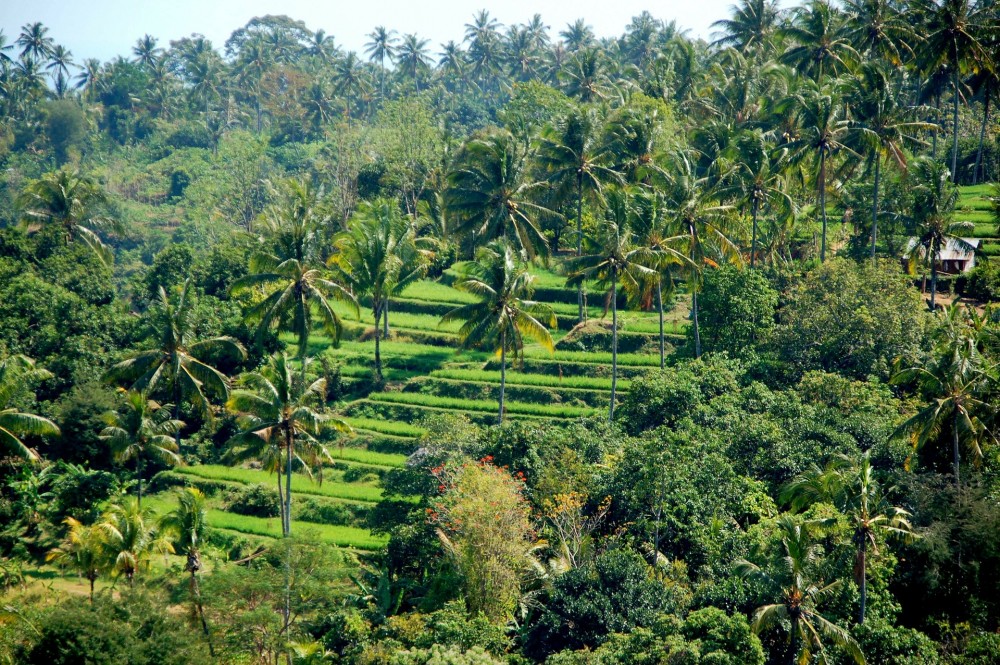
About Ubud
Ubud, a town in central Bali, is far removed from the beach party scene in Kuta, and is regarded as the cultural centre of Bali. It is famous as an arts and crafts hub, and much of the town and nearby villages seems to consist of artists’ workshops and galleries. There are some remarkable architectural and other sights to be found, and a general feeling of well being to be enjoyed, all thanks to the spirit, surroundings, and climate of the place.
Around Ubud the surrounding villages like Campuhan, Penestanan, Peliatan and Batuan specialise in crafts and woodcarving which are sold all over the island. There are hundreds of shops selling antiques, woodcarvings, crafts, textiles, paintings and jewellery as well as some of the best art museums in the country, dozens of art studios, an excellent local craft market and galleries.
Central Ubud can be covered on foot, but you will need some form of transport to explore the extended vicinity.
Ubud is generally a little quieter, and the streets calmer than the more urbanised parts of Bali. So whilst traffic is slower than in downtown Kuta for example, the sidewalks are often blocked by motorbikes, or a collapsed section necessitates a step off the sidewalk potentially placing you in the path of traffic.
Ubud, near Bali’s cool central upland, is a treasure trove of cultural landmarks, ranging from ancient temples and majestic age-old royal palaces, to wonderful panoramas of green hillsides and rice terraces. The town and its outskirts within the Gianyar regency, is your holiday destination if you are also into the Balinese culture, arts and crafts, as it was where some of the world’s notable artisans and collectors have visited, lived and worked, creating or compiling eclectic masterpieces that you can observe in local museums and art galleries.
Far more off the beaten path is to explore the rice fields immediately north of town. A good route is to take Jl Raya eastwards from the town centre and turn north up the small road immediately adjacent to the BCA Bank building. Proceed up this road through the village of Kutuh and just keep going, turning where you feel like it. This is a very gentle, rural area with some lovely landscape. A great way to explore is by bicycle as there are no steep hills to negotiate here.
Culture
The town and area has a number of art museums, such as the Blanco Renaissance Museum, the Puri Lukisan Museum, Neka Art Museum, and the Agung Rai Museum of Art. Close-by is the Museum Rudana in Peliatan, The Tek Tok is a traditional Balinese dance that is accompanied by musical sound of mouth ‘Tek Tok’ altogether with various combinations of body movement and other sounds. Tek Tok dance tale taken from the Mahabharata, where Draupadi at stake in a gambling.
The war between righteousness and villainy become part of the philosophy of life which has never dimmed. The story “Draupadi Parwa” Tek Tok Dance gives a moral message which when a woman who embodies the values of patience, sacrifice, compassion, devotion, and a holy sincerity is not respected, then disasters and calamities will befall a kingdom or state. This story also gives the message that truth, virtue, devotion and genuine compassion will always be protected by God.
Tek Tok Dance performance held regularly in Bali Culture Center (BCC) Ubud, Bali four times a week.
The area around Ubud is characterised by gently rolling rice paddies, and these create an impression of greenness which can be quite startlingly beautiful. This is especially true to the south and southeast of the town. Any visitor approaching from the south will appreciate this and it is worth a stop just to absorb the gentle beauty of it all.
Northeast of Ubud town centre the land starts to become more undulating, and this is a good place to view Bali’s classic rice terraces. The village of Tegallalang is very much a tourist trap, but it is worth braving the hordes of trinket peddlers to view the stunning terraces there. From the town centre, take Jl Raya as far east as you can go, and then turn north and continue about 9km until you reach Tegallalang. Look for the picture postcard rice terraces on you right-hand side. For those moving on north to the Kintamani area, this is on route and makes for an easy stop. A small fee is charged to cars entering, at least to tourists in hired cars.
Nature
The Ubud Monkey Forest is a sacred nature reserve located near the southern end of Jalan Monkey Forest. It houses the temple of death, and approximately 340 crab-eating macaque (Macaca fascicularis) monkeys live there.
History
Eighth-century legend tells of a Javanese priest, Rsi Markendya, who meditated at the confluence of two rivers (an auspicious site for Hindus) at the Ubud locality of Campuan. Here he founded the Gunung Lebah Temple on the valley floor, the site of which remains a pilgrim destination. The town was originally important as a source of medicinal herbs and plants; Ubud gets its name from the Balinese word ubad (medicine).
In the late nineteenth century, Ubud became the seat of feudal lords who owed their allegiance to the king of Gianyar, at one time the most powerful of Bali’s southern states. The lords were members of the Balinese Kshatriya caste of Sukawati, and were significant supporters of the village’s increasingly renowned arts scene
Where to stay:
Accommodations in Ubud are also somewhat more reasonably priced than in the beach towns of Bali. But atmosphere is perhaps the major attractions. One visitor summed it up this way: Kuta is madness, Sanur is sterile, and Nusa Dua is culturally isolated; Ubud is the place to go.
Ubud Hotel Map:
[tp_hotelmap_widget coordinates="-8.519268, 115.263298" width=100% height=500 zoom=12]Please contact us for hotel reccomodations in Ubud.
Recommendet Hotels:
[tp_hotel_widget hotel_id=17846 responsive=true] [tp_hotel_widget hotel_id=318433 responsive=true] [tp_hotel_widget hotel_id=318474 responsive=true]
Ubud Hotel Deals:
[tp_hotel_selections_widget id=23545 cat1="4stars" cat2="tophotels" cat3="rating" type=compact limit=10]Attractions
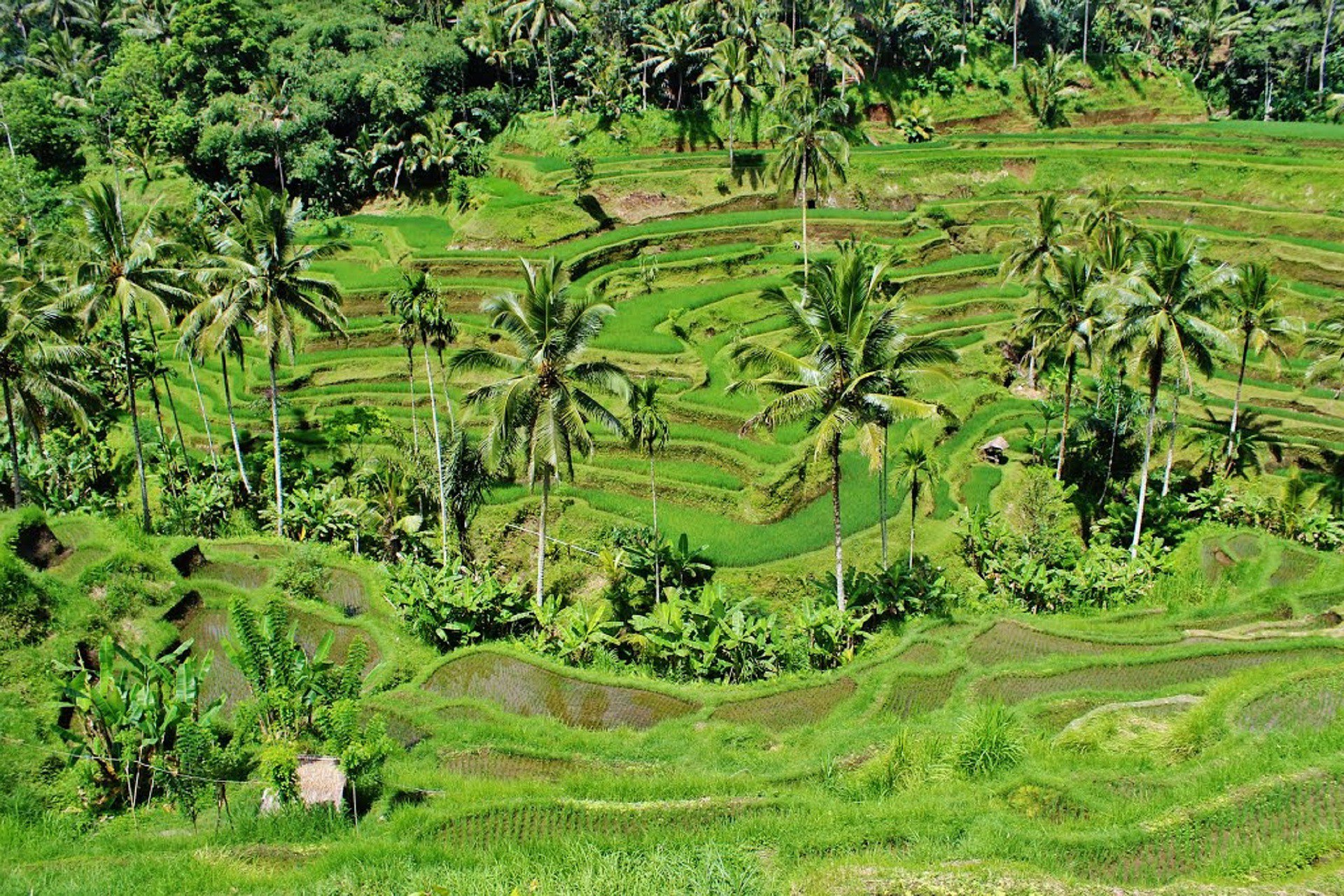 Ubud is so crammed with attractions it can almost seem like a visual assault at times. Try to make sure you allocate at least a week for your visit here, and take your time to explore properly. Visitors who jump in to Ubud for just two or three days of their Bali holiday, stand little chance of understanding much of what is going on around them.
Ubud is so crammed with attractions it can almost seem like a visual assault at times. Try to make sure you allocate at least a week for your visit here, and take your time to explore properly. Visitors who jump in to Ubud for just two or three days of their Bali holiday, stand little chance of understanding much of what is going on around them.
Goa Gajah is one of the island’s most impressive archaeological sites, located south of the Bedulu village, a region famous for its collection of historical sites. The temple complex is within a six-kilometre drive south of central Ubud and an hour’s drive northeast from the provincial capital of Denpasar.
Ubud Monkey Forest is one of Bali’s several grey long-tailed macaque-inhabited forests, and perhaps the best known among the rest due to its community-based management, location and ease of access. It lies on the fringes of the Ubud main centre, and is overseen by the Padangtegal village. Also known as the Sacred Monkey Forest of Padangtegal.
Bali’s traditional, centuries-old cooperative irrigational system known as ‘Subak’ has created among the most beautiful terraced landscapes in Southeast Asia. Several minutes’ drive north of the main Ubud centre is the cool upland area of Tegallalang, which has become famous for its scenic stopover where travellers to the northern region drop by for snapshots and souvenirs.
Puri Saren Temple - Just a hop away from the Ubud Art Market is the palace of the Ubud royal family, referred to as Puri Saren Agung. The Ubud Royal Palace is one of the most prominent places in Ubud, as it is smack-dab on the main Jalan Raya Ubud road and intersection.
Blanco Renaissance Museum is an unofficial landmark in Ubud, the house and studio of the late flamboyant Philippine-born maestro, Don Antonio Blanco. Located on a hilltop overlooking the lush valley of Campuhan, it houses paintings, collages and illustrated poetry, together with lithographic artworks of his favourite subject: nude Balinese women.
Bali Bird Park & Reptile Park is a unique and educational attraction fit for the whole family. Two hectares of fine tropical gardens offer an interesting leisurely walk amidst the rich compilation of nearly a thousand exotic birds from the Indonesian archipelago and around the world. The Bali Bird Park is located in the village of Batubulan, Gianyar Regency.
Bali Zoo, locally referred to as ‘Kebun Binatang Bali’, is the only animal attraction in Bali using ‘zoo’ in its name. The zoo is set over 8ha of lush tropical gardens in the village of Singapadu, Gianyar regency. The zoo is a convenient stopover before Ubud on tours from the island's south.
Gunung Kawi (Poet Mountain), Tampaksiring (18 km northeast from Ubud). Daily 07:00-17:00. Dating from the eleventh century, this is presumed to be the burial complex of King Anak Wungsu and his many wives. Reached by climbing down 371 steps, the location at the bottom of a steep valley lined with paddy fields, is quite stunning. It's not easy to climb all those steps but to see one of Bali's oldest and largest ancient monuments in this lush green river valley is worth it. The smaller complex on the south side of the river is presumed to have been built for the King's wives, while the larger complex is thought to have been the residence of the King himself, and perhaps his concubines. The structures are carved into the sides of a steep river valley, and the river crossed by twisting trees and vines.
Tirta Empul, Tampaksiring (20 km northeast from Ubud). Daily 08:00-18:00. One of the holiest temples in Bali built around hot springs that still bubble in the central courtyard. The Balinese come here to bathe and purify themselves physically and spiritually, and during Galungan, the sacred barong masks are bathed here. Take extra clothes if you want to bath with locals. Water from the spring is clean and believed to have magical powers. The complex dates to 960 .
Neka Art Museum, in Jl Raya Sanggingan, Kedewatan. This museum houses perhaps the most important art collection in the whole of Bali. Six pavilions house the various collections which include dedicated rooms for artists Arie Smit and I Gusti Nyoman Lempad. Our favourits are pictures from abdul Asis.
The village of Tegallalang you can reach on a very busy street, but it is worth braving the hordes of trinket peddlers to view the stunning terraces there. From the town centre, take Jl Raya as far east as you can go, and then turn north and continue about 9km until you reach Tegallalang. Look for the picture postcard rice terraces on you right-hand side.
The White Herons of Petulu, Petulu. Every evening between 15,000 and 20,000 cattle egrets, known colloquially as white herons and in Balinese, kokokan, roost in the village of Petulu just ten minutes north of Ubud. It is quite a spectacle as these large, elegant white and rusty orange birds arrive in countless groups and tussle for the prime roosting spots. Each morning at dawn they leave en-masse to find feeding spots around the island.
Things to do:
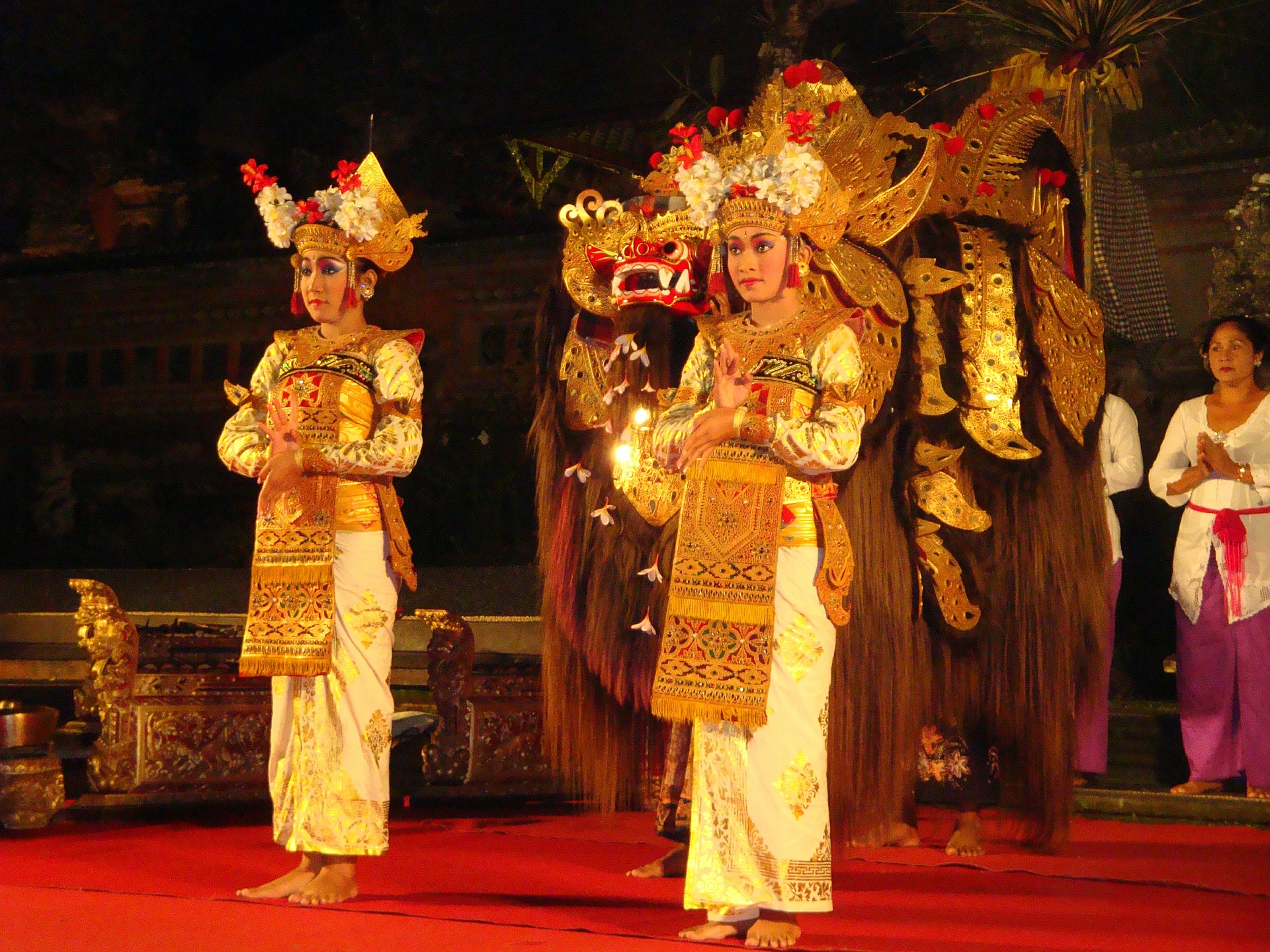 Blanco Renaissance Museum is an unofficial landmark in Ubud, the house and studio of the late flamboyant Philippine-born maestro, Don Antonio Blanco. Located on a hilltop overlooking the lush valley of Campuhan, it houses paintings, collages and illustrated poetry, together with lithographic artworks of his favourite subject: nude Balinese women.
Blanco Renaissance Museum is an unofficial landmark in Ubud, the house and studio of the late flamboyant Philippine-born maestro, Don Antonio Blanco. Located on a hilltop overlooking the lush valley of Campuhan, it houses paintings, collages and illustrated poetry, together with lithographic artworks of his favourite subject: nude Balinese women. Walk: For a free and easy nature trek in Ubud, try the Campuhan Ridge Walk that offers you an escape from the bustles of the main Ubud streets to enjoy cool fresh air and probably the most gorgeous hillside vista in the region. It starts off from the scenic Gunung Lebah Temple, and there's a chance you'll meet a few fellow trekkers and joggers on their way back from their morning walks.
Restaurants
Some good restaurants in Ubud are:Bridges Bali is one of Ubud’s most famous and scenic dining spots, overlooking the Campuhan River. As one of the best restaurants in Ubud, the multiple-level venue features a dedicated wine bar upfront, and inside you will enjoy a cosy and elegant setting with spaces that also double as an art gallery featuring regular painting, sculpture and artistic photographic exhibits. Bridges Bali serves casual lunches and romantic candlelit dinners with Asian and Western delicacies. (Campuhan Bridge, Jalan Campuhan, Ubud)
Mozaic essentially presents French-inspired Balinese and Indonesian cuisine to the island’s fine dining scene. One of Ubud best restaurants, this award-winning garden restaurant and lounge is tucked away in Ubud’s quieter part on Jalan Raya Sanggingan, only several minutes’ drive up from the main Ubud hub. Mozaic offers fine dinners in a lush and romantic open garden setting and in a spacious and cosy dining pavilion. Chef-owner Chris Salans presents his fresh approach to French cuisine that incorporates local, exotic Balinese ingredients through a varying menu, together with private dinner experiences. (Jalan Raya Sanggingan, Ubud)
Seniman Coffee Studio serves great cups of Java while in Ubud. The quirky café is located on Jalan Sriwedari. Step into the artistically laid-out space and enjoy vast selections of specialty single-origin coffee from over five different regions in Indonesia, prepared using siphon, pour-over drip, hand-pull and Italian espresso brewing methods. ‘Artist’ in the local tongue, Seniman is a great stopover where you can enjoy great brews in cosy, artistic interiors with in-house designed furniture and ‘up-cycled’ glassware. (Jalan Sriwedari, Ubud)
Read more
Thank you for using BaliDiscover.com
For inquiries and the special discounts, please fill in this form below.
We try our best to get the cheapest rates for you.
Please fill out the form completely as this will enable us to make suitable suggestions tailored to your specific requirements.
Here you can make an inquiry for your next Bali holiday:
What happen when you send this form:
After you send your reservation form we will contact you soon as possible by mail if your requested hotel is available.
You will receive all details about your inquiry by mail.
Please allow us up to 24 hours to proceed your inquiry and reservations.

